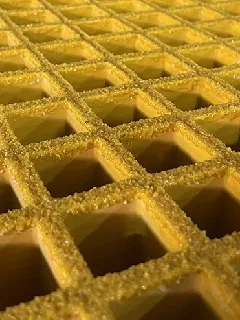loading...
- No. 9, Xingyuan South Street, Dongwaihuan Road, Zaoqiang County, Hengshui, Hebei, China
- admin@zjcomposites.com
- +86 15097380338
- Welcome to visit our website!
structural frp fiberglass
Understanding Structural FRP Fiberglass A Game Changer in Construction
In the ever-evolving world of construction and engineering materials, Fiber-Reinforced Polymer (FRP), particularly fiberglass, is gaining significant attention. As industries strive for innovative solutions that enhance durability, reduce weight, and improve sustainability, structural FRP fiberglass has emerged as a viable alternative to traditional materials such as steel and concrete.
What is Structural FRP Fiberglass?
FRP composites are materials that consist of a polymer matrix reinforced with fibers. In the case of structural FRP fiberglass, the fibers are primarily made from glass, resulting in a lightweight yet robust material. The polymer matrix binds the fibers together, providing structural integrity and resistance to environmental factors. This combination offers a unique set of benefits that can transform how structures are built and maintained.
Properties and Advantages
1. Lightweight Nature One of the most significant advantages of structural FRP fiberglass is its low weight compared to traditional building materials. This characteristic allows for easier handling and installation, reducing labor costs and time on site. The lightweight nature also means that structural designs can be more flexible, allowing engineers to reimagine how spaces are utilized.
2. Corrosion Resistance Unlike steel, fiberglass does not rust or corrode when exposed to harsh weather conditions or chemicals. This property makes it ideal for use in environments where traditional materials would fail, such as marine applications, wastewater treatment plants, and chemical processing facilities. The longevity of FRP fiberglass can lead to significant cost savings over time as maintenance and replacement needs decrease.
3. High Strength-to-Weight Ratio Structural FRP fiberglass boasts an excellent strength-to-weight ratio, making it a robust option for structural applications. This feature ensures that structures can support substantial loads while keeping overall weight down, a critical factor in design and construction, particularly in high-rise buildings and other heavy structures.
4. Thermal and Electrical Insulation FRP fiberglass is an effective thermal and electrical insulator. This quality helps reduce energy costs in buildings by maintaining temperature and minimizing heat loss. Additionally, its insulating properties make it safe for electrical applications, offering protection from electrical hazards.
structural frp fiberglass

5. Design Flexibility The versatility of FRP fiberglass allows for creative and complex designs that may be challenging or even impossible to achieve with traditional materials. Architects and engineers can explore new shapes and forms, enhancing the aesthetic appeal of structures while ensuring they meet functional requirements.
Applications in Construction
Structural FRP fiberglass is being increasingly utilized in various sectors of construction, from bridges and walkways to residential buildings and architectural elements. Here are a few notable applications
- Bridges FRP composites are used in bridge construction due to their strength and resistance to environmental degradation. These bridges often feature longer spans and lighter components, which can reduce the need for extensive foundations.
- Building Components Elements such as beams, columns, and panels can be made from FRP fiberglass. These components not only reduce the overall weight of the structure but also contribute to enhanced energy efficiency due to their insulating properties.
- Marine Structures The resilience of fiberglass against saltwater corrosion makes it ideal for docks, piers, and other marine structures. Its longevity in these environments ensures that investments are protected against the elements.
Challenges and Future Outlook
Despite the numerous advantages, the adoption of structural FRP fiberglass is not without its challenges. These include higher initial material costs and a lack of widespread knowledge and experience in working with FRP among construction professionals. However, as technology advances and the benefits of FRP become more recognized, it is likely that these challenges will be addressed.
The future of construction is leaning towards sustainable practices, and structural FRP fiberglass is poised to play a crucial role. With continued innovations and increasing awareness of its benefits, FRP fiberglass could very well revolutionize the way structures are designed, built, and maintained, creating safer, more durable, and environmentally friendly buildings for generations to come.
-
The Expansive Industrial Reign of FRP Pressure VesselsNewsAug.22,2025
-
Manufacturing Premium FRP Square Pipes for Global Wholesale ExcellenceNewsAug.22,2025
-
Strategic Applications for FRP Grating SolutionsNewsAug.22,2025
-
Material Science Forging GRP Water Tank LongevityNewsAug.22,2025
-
The Engineered Excellence: Material Science Behind FRP Railing SystemsNewsAug.22,2025
-
How Digital Pultrusion Revolutionizes FRP Profile WholesalingNewsAug.22,2025
-
The Rise of FRP Profiles: Strong, Lightweight, and Built to LastNewsJul.14,2025
